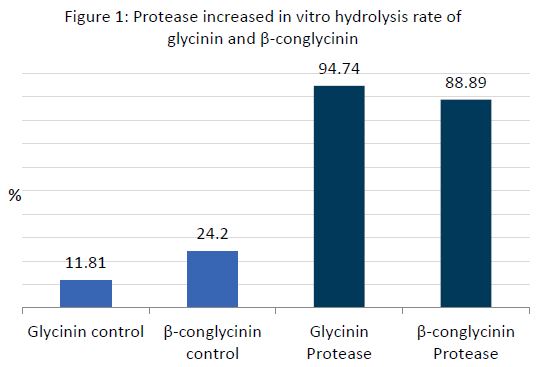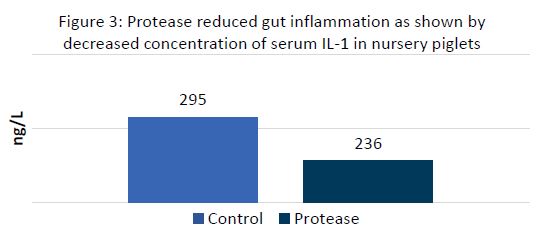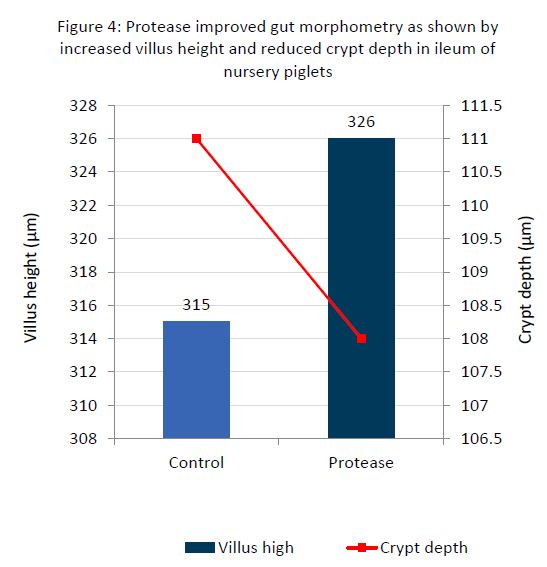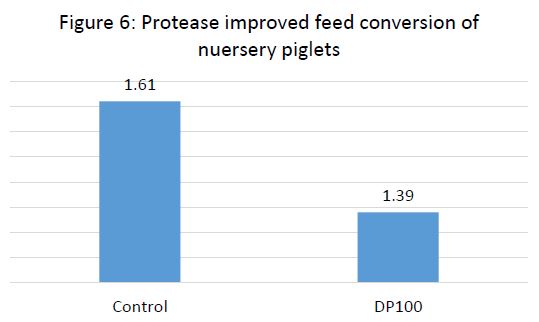



Alleviating Soybean Allergenic Proteins Hindering Nursery Performance
ANALYSIS - The global swine industry adopted early-weaning practices a generation ago. However, early weaned piglets have been characterized by poor growth performance, known as the “post-weaning lag,” writes Cassio Villela, Sr. Swine Marketing Specialist, Novus International, Inc.A transient hypersensitivity response to new exposure to soy protein is one reason for the lag in post-weaning growth performance. Soybean meal (SBM) is commonly used as the primary protein source in pig diets. While some of the proteins in SBM are more easily digested, others can be quite difficult, especially for newly weaned piglets. The proteins that cause piglets the most problems include glycinin, which makes up about 40% of the total soybean protein, and β-conglycinin, which makes up about 30% of the total protein.
These soy proteins have been found to be allergenic within the intestinal lumen. Studies indicate that if an allergic reaction is mounted at the intestinal level, a local inflammation is generated, affecting protein and lipid metabolism and damaging the intestinal lining cells as shown by villus atrophy and crypt hyperplasia which reduces nutrient absorption capacity. Some have also suggested that the proliferation of E. coli observed in the nursery phase may be more opportunistic due to these changes, rather than a primary cause. Moreover, unlike anti-nutritional factors present in SBM, thermal treatment in soybean does not alleviate glycinin and β-conglycinin which exposes nursery piglets to risk.
Considering that about 70% of the total soybean proteins are difficult for piglet digestion, it helps explain why a high inclusion of SBM in newly weaned piglet diets can lead to gut health issues often resulting in diarrhea and reduced growth performance. Therefore, SBM inclusion to newly weaned piglet diets is often limited, combining with other animal protein sources which do not contain anti-nutritional factors, such as fish meal, plasma proteins, and milk proteins. However, the digestibility benefits of such animal protein sources come at a cost, as they are more expensive than soybean meal.
Protease Offers Solution
CIBENZA® DP100 enzyme feed additive is a broad range protease which hydrolyzes different protein substrates including glycinin and β-conglycinin which can reduce the piglet’s allergic response and help post-weaning growth performance. A study conducted by Novus International investigated the in vitro ability of protease to hydrolyze soybean glycinin and β-conglycinin and then evaluated the in vivo effects of protease on performance, intestinal morphology, and inflammatory response of nursery piglets fed corn-soybean diets with different crude protein concentrations. A saturated protease solution (1 ml) was added to two blank controls of either glycinin or β-conglycinin.
The in vitro study clearly demonstrated the ability of protease to hydrolyze glycinin and β-conglycinin (Figure 1). While only 12% of the glycinin and 24% of the β-conglycinin were hydrolyzed in the control, 95% of the glycinin and 89% of the β-conglycinin were hydrolyzed in the incubations with added protease.
Following the in vitro study, an in vivo study was conducted to evaluate the effect of the protease in hydrolyzing glycinin and β-conglycinin and consequently reducing intestinal allergic reaction to soybean proteins. A total of 280 nursery piglets were fed two levels of soybean meal (15% and 30%) and protease was added to the diet with higher inclusion of soybean meal. After 21 days on diets, blood was collected from piglets to assess lymphocyte proliferation, which is used as an indicator of allergic reaction response. Piglets supplemented with protease, although fed high SBM diets, had reduced lymphocyte proliferation to piglets fed low SBM diets (Figure 2). Results indicated that the allergic reaction to glycinin and β-conglycinin was lower in piglets fed diets supplemented with protease. These results confirm that the hydrolysis of glycinin and β-conglycinin observed in vitro was mimicked in vivo, reducing hypersensitivity to soybean protein.
Means with different superscript differ (P < 0.1)
Another in vivo experiment was carried out to evaluate the effects of protease on intestinal inflammation, gut morphology and growth performance. A total of 190 nursery piglets were fed diets with or without protease. At the end of the three-week trial, blood was collected from piglets for assessment of pro-inflammatory cytokines (IL-1, IL-6 and TNF-α; indicators of gut inflammation) and ileum samples were collected for morphometry assessment. Protease supplementation reduced (P < 0.01) the pro-inflammatory cytokine IL-1 (Figure 3; same pattern observed for other pro-inflammatory cytokines), increased (P < 0.01) villus height and reduced (P = 0.08) crypt depth from ileum (Figure 4), which altogether indicates diminished intestinal inflammation for nursery piglets fed diets containing protease. As a result, daily gain and feed conversion ratio were significantly improved (P < 0.01; Figure 5, 6) by protease supplementation compared with those fed non-supplemented diets.
In conclusion, the studies indicate that the protease can hydrolyze glycinin and β-conglycinin as observed by in vitro and in vivo trials. The hydrolysis of these antigenic proteins from soybean decreases the allergic reaction in the gut, thereby improving gut health, allowing piglets to grow faster and more efficiently, and also giving the flexibility for producers to include higher levels of SBM in nursery piglet diets which reduces feed cost.















